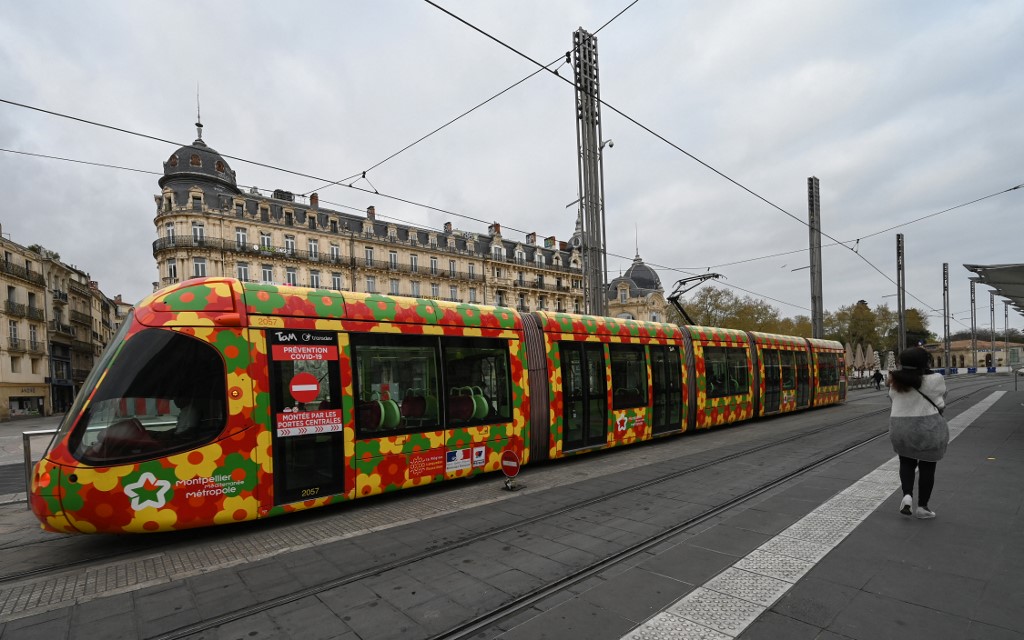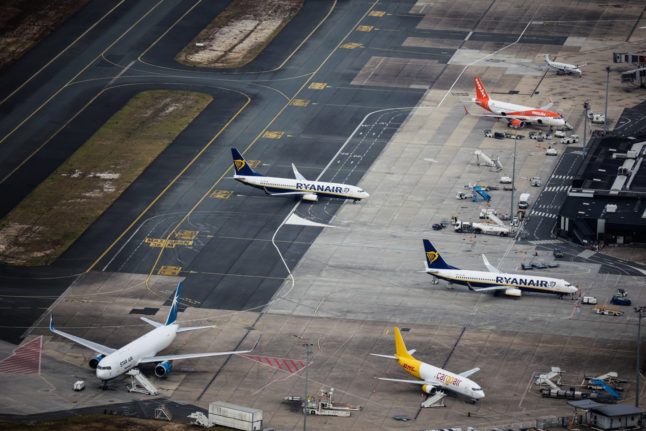More than 30 towns and cities across France now boast a tram network including Angers (population 150,000), Besançon (population 116,000), Avignon (population 92,000) and there are dozens of ongoing projects to extent these networks further.
Most of the big cities have them, from Strasbourg to Toulouse via Reims and Rouen, local authorities have developed tram systems that run alongside local bus and rail services.
The slight exception to this is Paris – although the capital does have a tram network it serves the suburbs and doesn’t extend to the city centre.
In fact, France now boasts more than 10 percent of the total number of tram networks in Europe.

So, what is it about trams that French local authorities seem to love so much, in the 21st century, having worked so hard to get rid of them in the 20th?
In August, Tours’ environmentalist mayor Emmanuel Denis celebrated 10 years of the tram. He said the system had been “extremely positive” for the city in western France.
“We’re now at around 65,000 passengers a day, whereas the target was 50,000,” he told France Bleu, going on to say that, since the trams started in 2013, there were 25,000 fewer cars on city streets, cutting carbon dioxide emissions by 40,000 tonnes daily.
“We’ve opened up the city’s political districts, and changed the face of Tours,” he added. “The Tours streetcar, with its distinctive design that everyone loves, has become a true symbol of the city.”
A delayed second line – currently forecast to carry an additional 35,000 passengers per day – is now expected to come into service in Tours in March 2028.
“It’s also the direction of history. We can see that public transport and ‘soft mobility’ [plans for non-motorised transport] are becoming increasingly popular,” Denis explained.
READ ALSO How close is Paris to its goal of being a 100% cycle-friendly city?
More than 1.1 million people use the tram services in Paris every day – despite it not serving the city centre – and more than half-a-million use them in Bordeaux, according to recent reports.
And French trams are also artistic.
The Marseille tram evokes the prow of an ancient ship, Montpellier’s trams are a blaze of birds, flowers, and greenery, while in Tours, designer Régine Charvet Pello told Weka.fr she “wanted to make the tramway a work of art”, with the complicity of visual artist Daniel Buren: a “cursor that glides through the city”, all in metal, mirrors and lights.
This Twitter thread suggests that cost may be a key reason for French towns’ dash towards tram systems.
Why do tiny French cities have trams while Bristol and Leeds don't? Cost.
Tram projects in Britain are two and a half times more expensive than French projects on a per mile basis.
France's most expensive tram project is still cheaper than Britain's cheapest. pic.twitter.com/D0mEltnZJ7
— Sam Dumitriu (@Sam_Dumitriu) August 25, 2023
But there are other concerns, too, beyond city pride. The electricity-powered vehicles create few emissions. New technology means that future trams could run on hydrogen fuel cells, which create only water. And the grass that’s often seen between the rails is an environmental decision, too. It keeps those areas cooler.
In many French cities, they also usually offer the quickest and most efficient form of transport in central areas – and, as part of a coordinated local transport plan can be used in conjunction with local bus or rail travel – most French cities offering travel pass or ticket that covers bus, tram and Metro services.
Other public transport
It’s not just about trams, of course, France has in recent years worked hard to improve its public transport, especially in towns and cities.
News stories about France’s national and local public transport systems frequently focus on the problems – strikes, lines closures, delays caused by maintenance, that sort of thing.
But towns and cities across the country operate services that, on the whole, work pretty well. Dozens of them – including Calais, Dunkirk Libourne, Niort, Aubagne, Gap, and Castres – offer permanent free bus travel on in-town routes.
Others – including Rouen, Nantes and Montpellier – run or have trialled free public transport on certain days, notably weekends. And some have free travel for under-18s.
The idea is to ease congestion on the roads by increasing the number of journeys made by bus, and to reduce the environmental impact caused by cars.
There are issues with France’s public transport system – no one is pretending there isn’t. In many rural areas, having a car is vital because public transport services are poor or non-existent. As well as the added expense for rural households, car-dependency also frequently puts rural France on a collision course with the government, which is trying to promote alternatives to the car as part of their environmental commitments.
To try and address this disparity between urban and rural public services, the government has set up a €90 million fund for local authorities to roll out “innovative and supportive” mobility services so that people “are less dependent on their car”.



 Please whitelist us to continue reading.
Please whitelist us to continue reading.
Nice article. I love trams!
Not totally true that Paris trams “exclusively serves the suburbs.” Lines T3A and T3B run along the edge of the city and are a great way to get around.
It’s a little annoying that you can’t transfer from the metro to a tram with your transit ticket or pass though.
I like trams, because they seem more accessible than buses and the metro, particularly for older people.